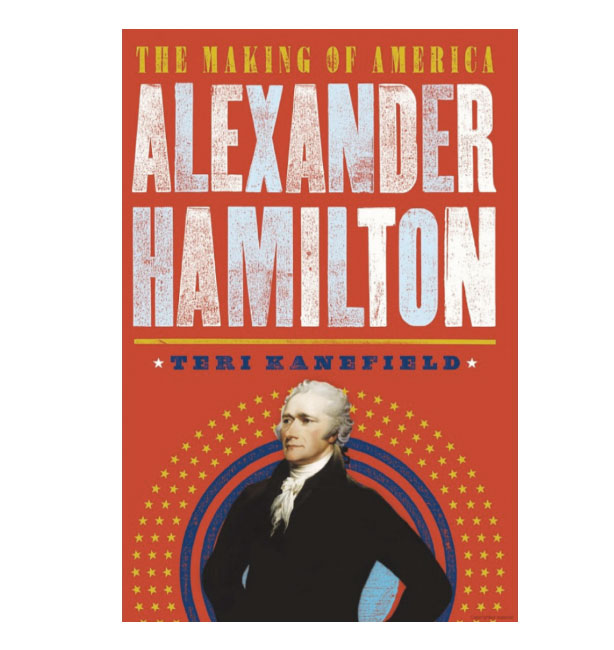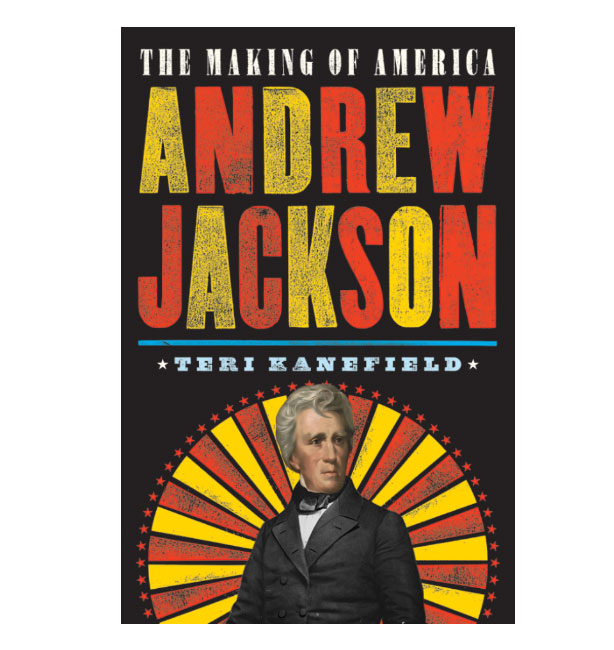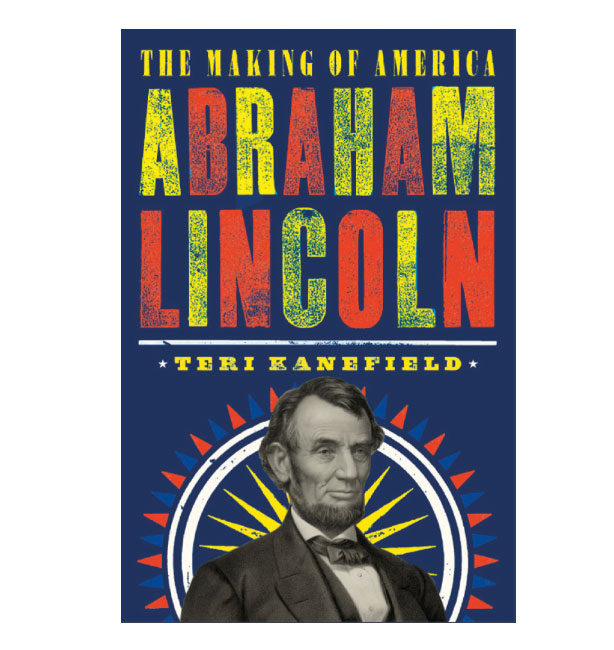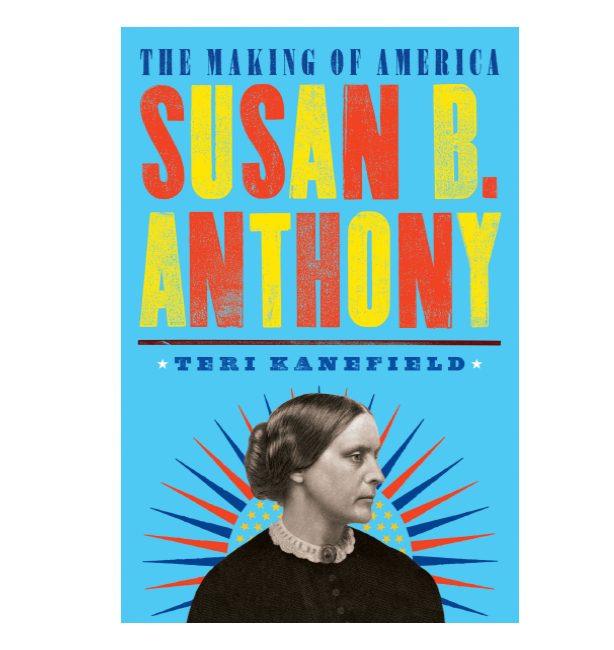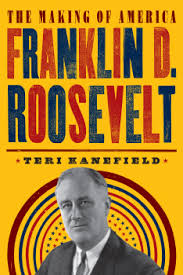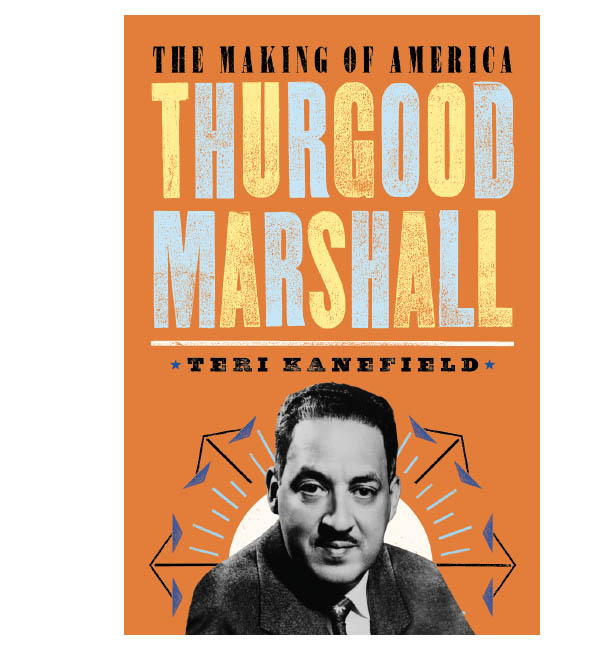The Making of America series traces the constitutional history of the United States through overlapping biographies.
The debates that raged when our nation was founded have been argued ever since: How should the Constitution be interpreted? What is the meaning, and where are the limits, of personal liberty? What is the proper role of the federal government? Who should be included in “we the people”?
Each biography in the series tells the story of an American leader who played a major role in shaping the United States of today. Take an example, four of these figures pushed the boundaries of who is to be included in “we the people.” At the time of the founding of the nation, it was understood that “we the people” included white, well-educated, mostly landowning me. Under Andrew Jackson, “we the people” expanded to include all white men. As a result of Lincoln and the Civil War, “we the people” included Black men–at least in theory. Susan B. Anthony helped women get the vote. Thurgood Marshall worked to insure that all people are included.
- Book 1: Alexander Hamilton
- Book 2: Andrew Jackson
- Book 3: Abraham Lincoln
- Book 4: Susan B. Anthony
- Book 5: Franklin D. Roosevelt
- Book 6: Thurgood Marshall
Book 1
The America that Alexander Hamilton knew was largely agricultural and built on slave labor. He envisioned something else: a multi-racial, urbanized, capitalistic America with a strong central government. He believed that such an America would be a land of opportunity for the poor and the newcomers. But Hamilton’s vision put him at odds with his archrivals who envisioned a pastoral America of small towns, where governments were local, states would control their own destiny, and the federal government would remain small and weak.
The disputes that arose during America’s first decades continued through American history to our present day. Over time, because of the systems Hamilton set up and the ideas he left, his vision won out. Here is the story that epitomizes the American dream—a poor immigrant who made good in America. In the end, Hamilton rose from poverty through his intelligence and ability, and did more to shape our country than any of his contemporaries.
“Thoroughly researched and cited, this book is accessibly written and full of valuable information…Hamilton’s intelligence, ceaseless drive, and penchant for speaking his mind come across, giving readers a clear view of Hamilton’s character and his role in creating America.”Booklist.
” . . sparkling. . . a treasure of excellent information.” Huffington Post.
“A solid introduction to a charismatic founding father.” Kirkus Review.
“An informative yet accessible biography of the famed Founding Father. . . students will crave this title.” School Library Journal.
“[A] lucid biography that illuminates the personality and politics of Alexander Hamilton, spotlighting his role in shaping the structure of the U.S. government and economy.” Publisher’s Weekly.“
This wonderful companion to American history studies also features related subjects and concepts discussed in the book.” Broadway World.
From the Book Bloggers
“A well-researched and moving biography . . . an exceptional story about the birth of the American nation. It includes fascinating and important details about the workings of the economy that are rarely encountered in history books for young people . . . readers will join me in enjoying the fact that everything great that Alexander Hamilton succeeded in doing was built on a letter that he crafted and published at age sixteen. I appreciate how well Kanefield succeeds in drawing Hamilton as a damaged, very human man who, despite his flaws, positively influenced the lives of all of us who arrived in America long after he was gone.” Richie Partington.
“Teri Kanefield has once again done an exceptional job of bringing history to life.” The Musings of a Book Addict.
“The Making of America Alexander Hamilton is a book I encourage you to read. I found so much between the covers regarding freedom of speech, government, democracy, capitalism, even dueling. Mostly I discovered a man who had the courage to dream, to stand for what he believed and create one of the greatest countries in the world, America.” Mommy’s Memorandum.
“Kids obsessed with Hamilton? New book for young readers goes in-depth on the founding father.” Browadway World.
Book 2
Grateful American Book Prize: Honorable Mention
Andrew Jackson tells the story of one of our most controversial presidents.
Born in the Carolina backwoods, Jackson joined the American Revolutionary War at the age of thirteen. After a reckless youth of gunfights, gambling, and general mischief, he rose to national fame as the general who defeated the British in the Battle of New Orleans.
Jackson ran for president as a political outsider, championing the interest of common farmers and frontiersmen. Determined to take down the wealthy, well-educated East Coast “elites,” he pledged to destroy the national bank—which he believed was an engine of corruption serving the interest of bankers and industrialists. A stanch nationalist, he sought to secure and expand the nation’s borders. Believing that “we the people” included white men only, he protected the practice of slavery, and opened new lands for white settlers by pushing the Native people westward.
Jackson, a polarizing figure in his era, ignited a populist movement that remains a powerful force in our national politics.
★ Starred Review: This book is an eye-opening, accurately researched, well-written depiction of Andrew Jackson and his presidency. Kanefield does an excellent job of describing Jackson’s qualities as a leader—both good and bad—while interweaving his personal life and the impact it had on his role as president. Highly Recommended. School Library Connection.
This evenhanded, largely unflattering portrait of Andrew Jackson acknowledges that he was a controversial figure in his time and remains so to contemporary Americans, venerated by some and despised by others. . . . In assessing his legacy, Kanefield observes, “Jackson’s brand of conservatism—including his nationalism and notions of white male supremacy—threads its way through American history from his time to ours, and remains a powerful force in our politics.” A concise profile that successfully reveals Jackson’s personal complexities and contradictions and his controversial legacy as a public figure. Kirkus Reviews.
“Author Teri Kanefield has crafted an exceptionally well-researched biography of President Andrew Jackson. . . . As with the author’s recent biography of Alexander Hamilton, ANDREW JACKSON: THE MAKING OF AMERICA provides amazing insight into our constitutional history and helps us understand the roots of so many persistent American conflicts. It’s a “wow” book that will blow the minds of many an adolescent reader.” —Richie Partington, Book Blogger
Book 3
“A multifaceted, humanistic portrayal of our sixteenth president.” Booklist,
“The presidency of Abraham Lincoln and the many constitutional issues it dealt with are explored in this book for young readers . . . Kanefield continues to examine constitutional issues through the lives of important political figures. . .This concise and balanced narrative encapsulates the life and legacy of one of the country’s most important leaders. As in others in the series, Lincoln’s own words are used liberally, giving a sense of the way he thought and expressed himself. A solid addition for understanding America’s story. Kirkus Reviews,
“This factual account of Lincoln draws the reader in from the beginning, with John Wilkes Booth entering Ford’s Theatre in Washington with a loaded .44 caliber pistol. Starting with this tragic historical encounter captures the reader’s attention immediately before the book circles back to describe Lincoln’s birth. This easy-reading book unfolds like a story, yet is packed with factual information. It is amazing how much information is contained in this book without being overwhelming. . .This is sure to be popular among students who are lovers of history and biographies. Its quick and engaging style will surely appeal to reluctant readers as well. Recommended.” School Library Connections.
Book 4
“In an in-depth biography of this important historical figure, Kanefield relies heavily on primary-source materials, especially Anthony’s own revealing words. . . A fine biography, both enlightening and entertaining, on a critical topic.” Kirkus Review.
“When the name Susan B. Anthony resonates with middle-school readers, it’s generally in connection with women’s suffrage and collectible U.S. dollar coins. Here Kanefield presents the entire package of her activism over a remarkably lengthy career, from temperance to voting rights to abolition to child labor, with particular attention to the indefatigable zeal with which Anthony conducted her crusades, often to the annoyance of her allies and possible detriment of her causes. The fracture among progressives over prioritizing voting rights for black men or all women after the Civil War is clearly explained, as are the legal and political ploys wielded by Anthony’s foes to keep women pure, innocent, and domesticated. .. Photographs and period illustrations embellish the text, and notes, a timeline, a bibliography, and an index are included, as well as excerpts from three of Anthony’s addresses.” The Bulletin of the Center for Children’s Books.
Book 5
“Kanefield provides readers with an intimate examination of Franklin Delano Roosevelt, following the president from his birth in Hyde Park, New York, to his death in Warm Springs, Georgia. Along the way, readers discover Roosevelt’s complexities, his personal life, and his policies. These include well-known shining moments, such as his electoral victory in 1932 and the political and gender diversity of his cabinet, as well as darker moments in his life, including his ongoing affair with Lucy Mercer and his lavish lifestyle as a young man. . . .Those familiar with Kanefield’s other biographical works will not be disappointed. A solid account for both history buffs and report-writers.” Kirkus Reviews.
“This evenhanded overview of FDR walks a middle path perfect for middle grade readers. A commendable addition to school and public library collections.” School Library Journal
“The attack on Pearl Harbor offers a dramatic entry point into this biography, but its account of Franklin Roosevelt himself is intriguing on its own. Kanefield . . . organizes the facts logically and provides plenty of useful background information about society, politics, and events during Roosevelt’s life . . An enjoyable and broadly informative biography of FDR.” Booklist.
“His friends described him as complicated. His enemies said he was devious. Those closest to him understood he was elusive … behind a face that had two expressions: happy or serene.” This veneer, carefully cultivated in childhood to please his parents, becomes the dominant theme in Kanefield’s biography of American president Franklin Roosevelt, whose terms in office spanned the Great Depression and World War II . . . students seeking a general American history of the period will benefit from its well-defined focus. Bulletin of the Center for Children’s Books.
Book 6
“America’s first African American Supreme Court justice had a profound impact on constitutional law both before and during his time on the bench . . . Kanefield’s narrative is lively, and she provides important context where needed . . . An important addition to a highly useful series.” Kirkus Reviews.
“Beginning in 1967, when Marshall was considered by many to be a public enemy of the South, this book sets the stage for readers to take an in-depth journey into the life of Thurgood Marshall. This book . . . provides a well-rounded look not only at the life of Marshall, but at the events in the world that shaped him into the man he was, and how he in turn helped shape the world for future generations.” School Library Connection.
Readers will likely be drawn to a biography of Thurgood Marshall . . . Insets and in-text explanations smoothly bring readers up to speed on key concepts such as the “equalization strategy” . . . Kanefield also contextualizes Marshall’s career within the broader civil rights movement. Bulletin for the Center of Children’s Books.


